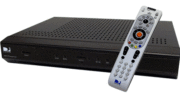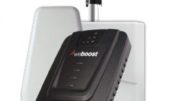It seems like the power bank is the must-have accessory of 2018. I’ve had one for about five years but it seems like this year, everyone has one. Not terribly surprising when you think about how much time we spend on our phones.
What does a power bank do?
Truth is, a power bank isn’t some magical thing. As I showed you not long ago, most power banks are garden variety rechargeable batteries with just enough circuitry to connect them to your phone. There’s nothing magical there. However, we’re starting to see them coming in all sorts of colors, sizes and shapes as if they were slender monoliths of pure awesomeness.
In fact, it was a few weeks ago that I read an article that none other than Elon Musk himself, purveyor of magical automobiles that go like crazy and never use a drop of gas, was offering a power bank for sale. This power bank not only charged your phone —wirelessly at that— but contained within it one of the very same batteries that make Tesla cars work. Wow, I thought. Then, I thought, $65 for a power bank. That doesn’t exactly light me up, pun intended. It’s back on his site now, and still overpriced.
So what makes his power bank worth paying for? I’d say, nothing.
Here’s the only thing you need to look for in a power bank.
Power banks are measured in mAh, or if you’re pronouncing it out loud, “milliamp-hours.” That’s the only thing you need to look for. Let’s unpack that a little bit.
Amps (really short for amperes but no one says amperes) are a measure of current. Amps measure the power flowing from one point to another.
Milliamps are thousandths of an amp. 1000 milliamps (mA) equals one amp. We use milliamps as a measurement for small batteries because small batteries carry small amounts of power.
Hours, that’s self explanatory hopefully.
One milliamp-hour is a flow rate of 1/1000 amp for a period of one hour. It doesn’t mean that it takes a full hour to do it, though. It could also mean a flow rate of 4/1000 amp for 15 minutes, or 60/1000 amp for 1 minute. All of these things are the same. A lot of people use water to describe how electricity flows. In that analogy, a gallon of water is a gallon of water, whether it takes an hour or a day to flow out.
How does this translate out?
It takes about 3,000mAh to fill a typical cell phone battery. Of course some phones have bigger batteries and some smaller, but it’s a basic measurement. So if you want to completely recharge your phone you will need a power bank that can supply 3,000mAh. Most of them sold today supply more. The sharp looking one at the top of this article supplies over 10,000mAh, meaning that it can charge your phone three times over before it’s depleted. Or, it can charge the phone of you and two of your friends. Either is true.
But basically mAh rating is the only thing you really care about in a power bank. So Mr. Musk’s fancy Tesla power bank, at $45, doesn’t supply any more power than this one we sell at Solid Signal for a lot less. It might look cooler, but that’s the end of the story.
But wait, there’s a bit more.
Yes, some power banks will do other tricks. Some have flashlights in them. Some will charge wirelessly, some have suction cups to hold them to your phone. There are power banks that come with pre-attached Lightning or USB-C connectors, for those folks who will never, ever change from Apple to Android or vice versa. Some are pink. Some just look cool. If you want to get a power bank like this, that’s awesome and I honestly encourage it. But you’re not deciding to buy one for its capabilities. You’re buying one to be fashionable. That’s fine, of course. Just know that you can get a perfectly great power bank at an awesome price at Solid Signal.





